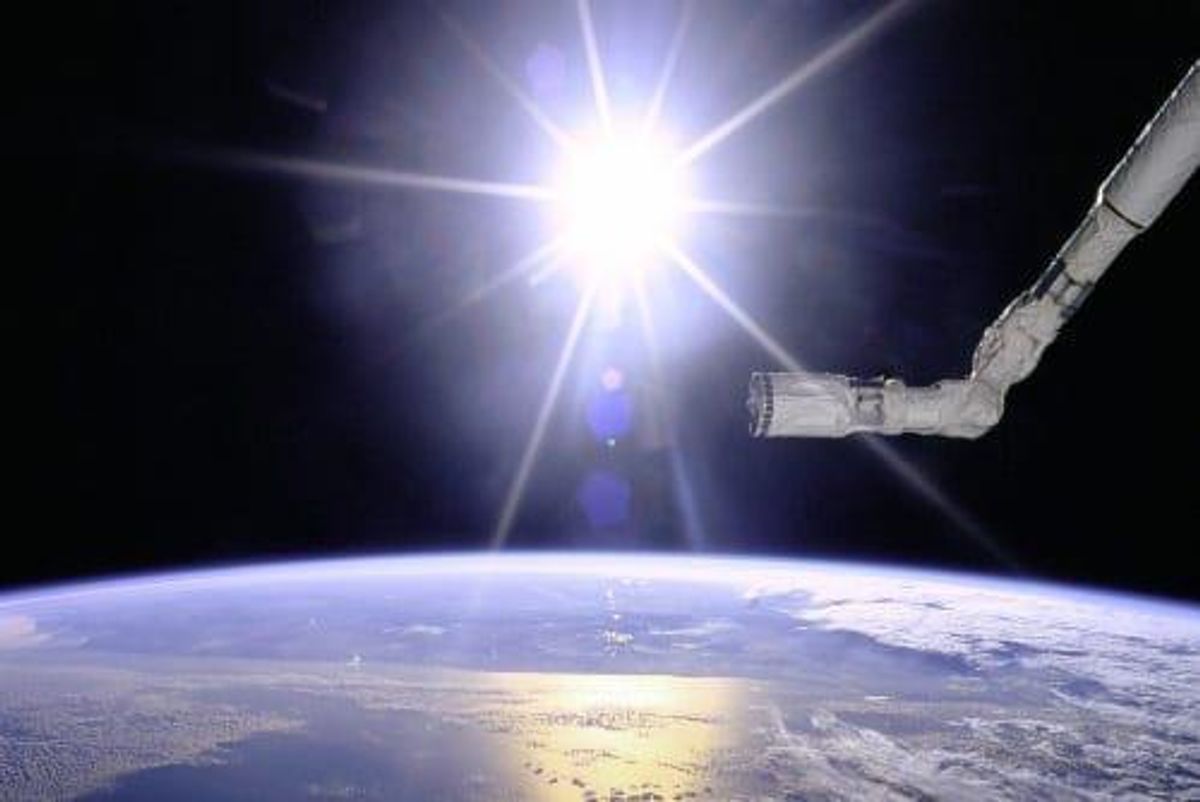Maxar Gets Nod from NASA for Robotic Spacecraft Technology
Maxar has confirmed an in-space assembly demonstration using a robotic arm that will be part of a spacebus, the maintenance vehicle Restore-L.

Maxar Technologies’ (NYSE:MAXR,TSX:MAXR) relationship with NASA has deepened after recent announcements involving proprietary robotic arm technology.
The company confirmed the news of an in-space assembly demonstration using a lightweight robotic arm on Friday (January 31). Maxar told investors the arm, called SPIDER (Space Infrastructure Dexterous Robot), will be part of what the company refers to as a spacebus it’s building for NASA’s satellite maintenance vehicle project, Restore-L.
Shares of the space technology company jumped 9.5 percent from Friday’s close to the start of the trading session on Monday (February 3).
On Tuesday (February 4), the company sat at US$17.23 in New York as of 3:30 p.m. EST.
Among other capabilities, SPIDER will allow for the assembly of parts for the spacecraft while in orbit.
According to Maxar, the use of this device could unlock the possibility of brand new architectures and space infrastructure, including galactic human space exploration, commercial satellites and in-orbit telescope assembly.
As a part of Restore-L, the arm will be used to create a large antenna reflector — a device that reflects electromagnetic waves, including radio frequencies — out of smaller reflectors’ elements.
The US$142 million award comes after Maxar successfully demonstrated the technology in 2017.
Since SPIDER offers the ability to assemble parts in orbit, the company said that devices like telescopes and satellites can use the arm when constructing devices using more powerful components that might not fit onto a rocket fully assembled.
This isn’t the first time Maxar has worked with NASA. The firm’s team in Pasadena, California, previously built six robotic arms for NASA’s Mars rovers and landers, including an arm that will be used for the Mars 2020 Rover, set to launch in July this year.
Megan Fitzgerald, Maxar’s senior vice president and general manager of space infrastructure, said in a press release that SPIDER and the spacebus offer new applications for communications and remote sensing that will be used in future exploration missions beyond Earth’s orbit.
Maxar has also been tasked with delivering the Sample Acquisition, Morphology Filtering and Probing of Lunar Regolith (SAMPLR) arm to NASA.
The same Pasadena team will lead the charge on the SAMPLR arm; the contract with the space agency is valued at US$5 million and will be used to collect samples from the moon’s surface.
SAMPLR is part of NASA’s program to send a man and the first woman to the moon by 2024 to prepare for a human-led mission to Mars. SAMPLR will be the first arm used on the moon since NASA’s Surveyor program sent robotic spacecraft to the astronomical body in the late 1960s.
Fitzgerald said the SAMPLR contract is a part of Maxar and NASA’s effort to improve in-space technology assembly for spacecraft currently in orbit.
Don’t forget to follow us @INN_Technology for real-time news updates!
Securities Disclosure: I, Danielle Edwards, hold no direct investment interest in any company mentioned in this article.